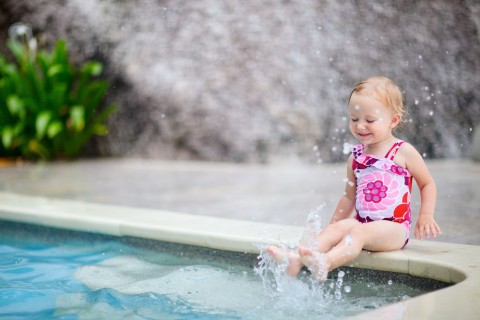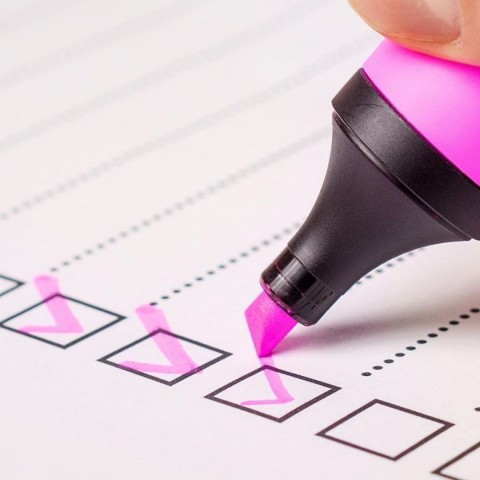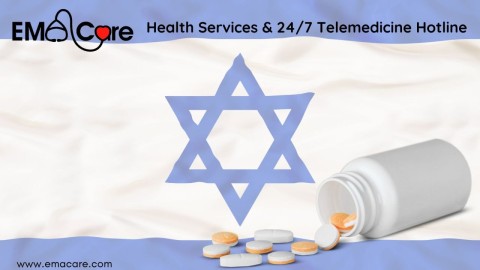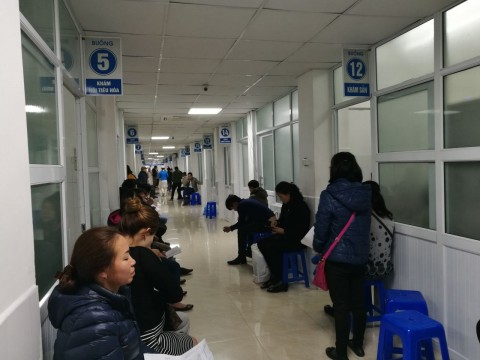Water Safety in the Summer
Early in the summer, and there have already been numerous drownings and near-drownings of (mostly) children and babies in Israel.
Children drown in pools, at beaches, and even in buckets of water. Adults usually drown because of poor judgment – jumping into rapids or going deep into the sea without swimming skills. “Near drownings” oftentimes cause irreversible brain damage due to prolonged lack of oxygen. Contrary to popular belief and Hollywood imaginations, drowning is almost always a silent process. If someone can call for help and wave their arms, they may be in trouble, but they are not drowning.
Dangers of flotation devices
I recall an incident several years ago in a kibbutz pool when, swimming with my children in shallow waters less than a meter deep, a toddler in a flotation device floated near us. The mother was in the pool talking to a friend about a meter away when the baby leaned forward to touch the water, and the entire flotation device flipped over. The child’s head was completely submerged in the water, with his feet waving in the air, caught in the flotation device. It was silent. It could have been deadly.
I flipped the child back and, holding onto the child, approached the mother, who was distracted and oblivious as to what happened and almost happened. I explained to her what happened, and she waved me off, thanked me, continued her conversation, and allowed her child to float alone. Neglectful? Probably. Typical? Definitely.
People are often ignorant about basic water safety, trusting cheap flotation devices to babysit their children, getting distracted, and inadvertently neglecting their children’s safety. Here is a fact: Flotation devices are not safe. The Australian Competition and Consumer Commission sums it up well: “Swimming and flotation aids are not safety devices, and they are not designed to prevent drowning. Children must be supervised at all times when around water. Children may drown when flotation aids are misused.”
Flotation devices will keep a child afloat, but as illustrated above, they will not prevent drowning and should never be used instead of direct supervision. I never gave my children flotation aids. I held them and taught them how to swim from a young age.
If you use a flotation device on a baby or young child, you must still hold them continuously, assuring that the device is being used correctly for the child’s height, weight, age and that the device is intact. As early as possible, teach your child to swim and shed these devices.
Water wings (the floaties that go around the arms) can easily slip off and may hinder a child’s ability to swim properly. Most young children's devices should be considered toys and not relied upon as a flotation device or as babysitters. This fact is clearly marked in dozens of languages on nearly every flotation device I have seen marketed for children.
Rip currents, undertows, and beach safety
Among the many safety issues, one must consider teaching water safety even to young children. Children should never be playing near the sea boundary (where the waves hit the sand) without direct supervision. Tides change, and dry sand can be underwater quickly. Like most major water bodies, the Mediterranean is plagued with rough waters, rip tides or currents, and strong undertows.
Rip currents are strong currents that cause a narrow, powerful water current that cuts through the wave lines and can pull swimmers out to several hundred meters. Rip currents, which account for 80% of beach rescues and 100 deaths every year in the US alone, are like fast-running rivers, but they will not pull swimmers under the water. Signs of a rip current may include a noticeable break in the wave pattern, a different appearance of the area such as a long streak of foam or different-colored water, and increased sea debris going toward shore in the narrow current.
Most people who drown or near-drown during a rip current do so by panicking and fighting the current, exhausting themselves, and drowning. The US National Ocean Service recommends for people to float with the current and not to fight it. This is the safest bet, and you can call for help and signal the lifeguards simultaneously. Once the current ends, up to a few hundred meters from the shore, you can swim perpendicular to shore until past the rip current and then swim toward shore with the normal tide. It is not easy, but teaching these instructions to your family members can save their lives.
An undertow is extremely dangerous to young children playing in shallow water, as it can actually pull them underwater. Although strong undertows can pull adults under, they usually only do so for a short distance, and the adult can then regain footing. A small child does not have this ability, so meticulous monitoring of children, even in the shallows, is essential to prevent a tragedy.
Every official bathing beach in Israel has a lifeguard station with specific hours that vary per season. Most lifeguard stations are staffed from mid-April through the beginning of October. The lifeguards designate the areas where bathers are allowed to swim by using flags in the water. Throughout the day, lifeguards adjust the flag locations based on water conditions.
On top of every lifeguard stand is a flag that designates water safety. This is part of an international flag system. There may be other flags in the water or at restaurants on the beach, but the flag atop the lifeguard stand is the one that counts.
A white flag indicates that the water is calm and gentle. During this time, children still need to be watched closely by adults. A red flag indicates danger – either strong winds, powerful undertow, or big waves. Swimming is permitted in a restricted area but is dangerous for those who are not good swimmers. Small children should not be in the water unless with an adult, preferably one who is holding their hands.
Black flags indicate that swimming is forbidden. Lifeguards will still be there because that is their job, and beachgoers may be unaware of the reason for a black flag. Reasons may include rip currents, stormy seas, water or sand contamination, and other extremely hazardous conditions.
Purple flags indicate that there are jellyfish or Medusot in the sea. There are many kinds of jellyfish, and none are friendly, from burning skin sensation to actual stings that can lead to lethal consequences, stay out of the water when jellyfish abound.
Home Safety
Every year in Israel, several babies and toddlers drown or near-drown at home, usually in buckets of water or baths. Babies can drown in 2 cm. of water, so our visual safety assessment must take that into account.
Never leave a bucket of water near a baby or toddler, even if the bucket is mostly empty. Children are “top-heavy,” so much of their weight is in their heads. If they lean into a bucket, they can fall in head-first without the balance or strength to stand back up or right themselves. If washing the floor, the bucket should remain with the person cleaning, or a childproof gate should be used to prevent the child from getting near the bucket. Alternatively, the floor should be cleaned when the child is in a crib.
Baths are considered fun playtime and excellent bonding time between parents and children. However, precautions must be taken to assure a young child’s safety. Bathwater should be warm but not hot, as determined by the sensitive skin on the inner forearm. Never overfill a bathtub.
Babies require a few centimeters of water. Until they can sit up independently, babies must be held throughout the bath. Once they sit up, parents need to have hands near the baby to quickly help if they slip, turn over, or injures themself. Toddlers being bathed should be observed and at arm’s length at all times, and never under the care of another child or sibling.
Parents should not be on their phones or distracted during bath time, swim time, or beach time, as accidents can be silent and deadly.
** As seen in the Jerusalem Post. Dr. Eliana Aaron, the writer, is a family nurse practitioner with a doctorate from Yale University in nursing practice and over 20 years’ experience as a health professional. She is the EMA Care director, which provides 24/7 English-language telemedicine, health advocacy, and case-management services.
When you subscribe to the blog, we will send you an e-mail when there are new updates on the site so you wouldn't miss them.







